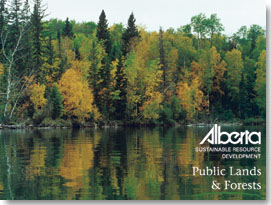Alberta

 Alberta
Alberta
| On March 14, 2010 the Eastern Native Tree Society
and Western Native Tree Society switched from discussion lists
on Google Groups to a new discussion list in a Bulletin Board
format at:
http://www.ents-bbs.org/index.php
Posts made since the inception of the BBS on March 14, 2010 will
be sorted and archived on the BBS. Click on the link to go to
the equivalent section on the new BBS. This website will
continue to serve as a front end for the ENTS and WNTS groups.
It will continue to serve as a repository of older posts, and
will serve as the host site for special projects and features
that are not well suited for a BBS format. Please visit the BBS
for the latest information and trip reports. |
Field Trips
 Alberta
Government, Sustainable Resource Development, Forests http://www3.gov.ab.ca/srd/forests/ Alberta
Government, Sustainable Resource Development, Forests http://www3.gov.ab.ca/srd/forests/
 Boreal Forest Region,
Alberta, Canada http://raysweb.net/specialplaces/pages/boreal.html
Mighty rivers drain north and east from the Rocky Mountains into the watershed of the Arctic Ocean. Look at any map of Alberta and you will see them: The Athabasca, Smoky, Peace, Chinchaga and Hay, tracing sinuous patterns across the vast northern half of the province, a lightly populated and little-known region of dark forests and muskegs. This is the Boreal Forest Region which comprises 48 percent of Alberta.
Boreal Forest Region,
Alberta, Canada http://raysweb.net/specialplaces/pages/boreal.html
Mighty rivers drain north and east from the Rocky Mountains into the watershed of the Arctic Ocean. Look at any map of Alberta and you will see them: The Athabasca, Smoky, Peace, Chinchaga and Hay, tracing sinuous patterns across the vast northern half of the province, a lightly populated and little-known region of dark forests and muskegs. This is the Boreal Forest Region which comprises 48 percent of Alberta.
 Edmonton
Journal Special Report on Special Places 2000.The need to protect
places in the boreal forest like the Caribou Mountains, the Clearwater
River valley, Buffalohead Hills, Wabasca River and Lakeland is urgent as
the eyes of the resource hungry south turn more and more to the north.
However, the Alberta Government is lagging in protecting portions of the
boreal landscape. Edmonton
Journal Special Report on Special Places 2000.The need to protect
places in the boreal forest like the Caribou Mountains, the Clearwater
River valley, Buffalohead Hills, Wabasca River and Lakeland is urgent as
the eyes of the resource hungry south turn more and more to the north.
However, the Alberta Government is lagging in protecting portions of the
boreal landscape.
 World Wildlife Fund Mid
Continental Canadian Forests http://www.worldwildlife.org/wildworld/profiles/terrestrial/na/na0608_full.html
The mid-continental Canadian forest ecoregion extends from southern Great Slave Lake in NWT to encompass most of northeastern Alberta, central Saskatchewan and parts of west-central Manitoba. This ecoregion is classified as having a subhumid mid-boreal
ecoclimate. It is marked by short, cool-to-warm summers and long, cold winters. World Wildlife Fund Mid
Continental Canadian Forests http://www.worldwildlife.org/wildworld/profiles/terrestrial/na/na0608_full.html
The mid-continental Canadian forest ecoregion extends from southern Great Slave Lake in NWT to encompass most of northeastern Alberta, central Saskatchewan and parts of west-central Manitoba. This ecoregion is classified as having a subhumid mid-boreal
ecoclimate. It is marked by short, cool-to-warm summers and long, cold winters.
|